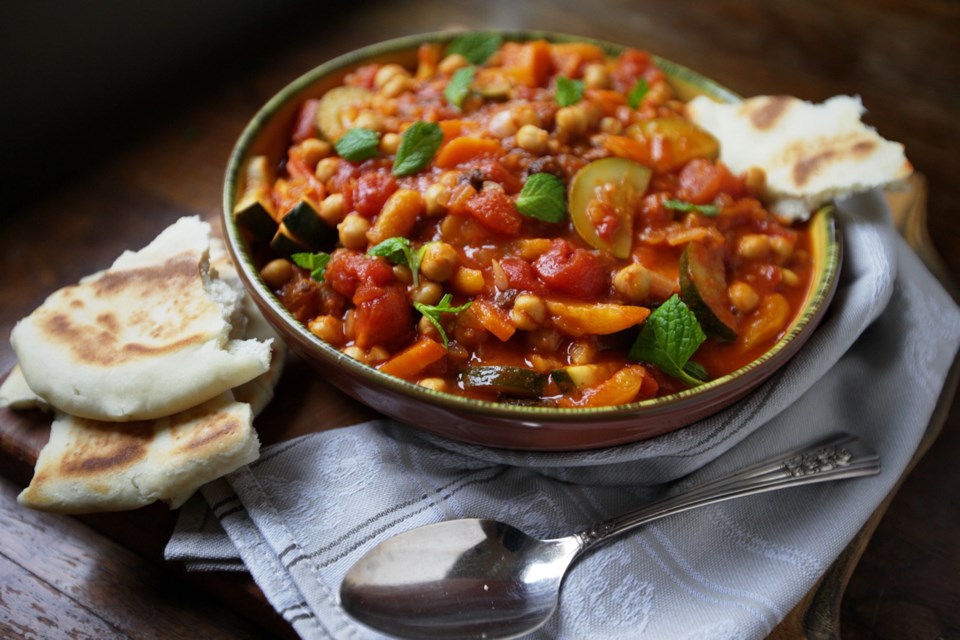 Dear Eric: I enjoy dried apricots for many reasons. They are usually in an airtight package. My question is, when they are exposed to air and they turn black, are they still OK to use? I think they should be, but the colour is off-putting. Is there a way to reverse the colour?
Dear Eric: I enjoy dried apricots for many reasons. They are usually in an airtight package. My question is, when they are exposed to air and they turn black, are they still OK to use? I think they should be, but the colour is off-putting. Is there a way to reverse the colour?
Ann
Dear Ann: The commercially made dried apricots sold at food stores come in two main forms, those treated with sulphur dioxide (sulphites) and those that are not. That fact might not be prominently noted on the package, particularly on those that are treated.
Dried apricots treated with sulphur dioxide are by far the most common type. That preservative is added during the drying process to preserve the apricots’ bright orange colour and extend shelf life. It’s the same treatment used for golden raisins, which are made from green-coloured grapes that would turn a dark colour if not prepared this way.
People gravitate toward orange-coloured dried apricots because they match the colour of the fruit when fresh. Orange dried apricots also look nicer in foods, whether added to homemade granola, trail mix or fruitcake.
Apricots that are not treated with sulphur dioxide come in two styles, certified organic and natural. The former name indicates the apricots were grown and handled to meet government guidelines for certified organic foods. The name “natural” simply means the apricots were not treated with sulphur dioxide and were allowed to dry naturally, which is also true for organic dried apricots.
Because organic and natural dried apricots are not treated with sulphur dioxide during the drying process, the fruit turns from its original orange colour to a dark brown/black colour.
Some people find that colour off-putting, even wondering if there is something wrong with the apricots. Those who are fans of these types of dried apricots say that, once you get past their look, you’ll discover they have a more intense, sweeter taste than the treated ones.
Some people also choose to eat organic or natural dried apricots because they suffer side-effects when they consume foods treated with sulphur dioxide.
For example, the National Center for Biotechnology Information says while harmless to healthy persons when used in recommended concentrations, it can induce asthma when inhaled or ingested by sensitive subjects, even in high dilution.
In Pete Luckett’s book, The Greengrocer’s Kitchen Fruit and Nuts, he says to store dried fruit such as apricots tightly covered in a glass container (so you can see what they are) in a cool, dark place. He says you could store them in the refrigerator, but it’s unnecessary. Other sources say to store them in the refrigerator if you bought a large volume of them and won’t use them for a year or so.
I’ve never seen a sulphur dioxide-treated dried apricot turn from its orange colour to black, even when exposed to air as Ann described. If that does happen, there’s no way to make them orange again; you should get rid of them and next time store the dried apricots as described above. As noted, organic or natural dried apricots will always be that dark colour and, of course, be safe to eat.
Below you’ll find a recipe for a vegetarian stew strewn with thin slices of dried apricots. When enjoying it, take heart in knowing that all types of dried apricots are good sources of fibre, potassium, vitamin C and beta-carotene, which makes them exceptionally rich in vitamin A.
Chickpea Vegetable Stew with Apricots
This vegetarian, Moroccan-style stew is warm with spices and features the taste of three types of fruit: apricots, raisins and lemon. Serve it over couscous, rice or quinoa. If you eat dairy, you could also set a dollop of thick yogurt on the stew once in the serving bowl.
Cooking: about 35 minutes
Preparation time: 25 minutes
Makes: four servings
2 Tbsp olive oil
1 medium onion, diced
1 medium carrot, halved lengthwise and cut in 1/2-inch slices
1 small zucchini, halved lengthwise and cut in 1/2-inch slices
2 large garlic cloves, minced
1 tsp ground cumin
1 tsp ground coriander
1 tsp ground ginger
1/4 tsp ground cayenne pepper
1 (14 oz./398 mL) can diced tomatoes
1 (14 oz./398 mL) can tomato sauce
1 cup vegetable stock
2 tsp freshly grated lemon zest
1 (19 oz./540 mL) can chickpeas, drained, rinsed and drained again
8 dried apricots, very thinly sliced
1/3 cup raisins
• salt to taste
• fresh mint or parsley leaves, to taste
Heat the oil in a medium to large pot set over medium heat. Add the onion and carrot, and cook four minutes. Mix in the zucchini, garlic and ground spices, and cook one to two minutes more.
Mix in the remaining ingredients and bring stew to a gentle simmer. Partially cover and simmer 20 to 25 minutes, or until the vegetables are tender. Taste the stew and season with salt, as needed. Serve portions of the stew topped with a few fresh mint or parsley leaves.
Eric Akis is the author of eight cookbooks. His latest is The Great Rotisserie Chicken Cookbook. His columns appear in the Life section Wednesday and Sunday.



